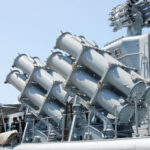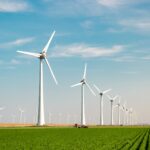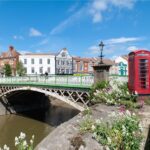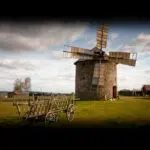National Windmill Day is celebrated on the second Saturday of May every year. This year, it falls on May 13. Windmills are a common feature in the Western world. For centuries they served as manufacturing plants and sources of energy. They shaped the development of villages, towns, and in some cases entire countries. They offered clean energy by harnessing the power of the wind. Over the years people added more innovations to make them more effective. The modern-day incarnation of a windmill, the wind turbine, is a much more complex and sophisticated piece of technology. Some countries like Denmark and Portugal have up to 20% of their energy generated by wind turbines. Windmills are still used to generate electricity today.
History of National Windmill Day
The earliest windmills date back thousands of years. Most windmills were used to process grain. In countries like Holland, windmills pumped flood water and redirected it for agricultural purposes. It’s believed that without windmills, the Dutch would have lost their towns and cities to floodwaters. Even today there are over 1,000 windmills in Holland, some of which are used to drain flood water and process grain. Early models used wooden parts, but as technology progressed windmills were constructed using stronger materials like metal. The first windmills in Europe were known as ‘post mills.’ These simple wooden structures were built on stilts above the ground. They weren’t as sturdy or as powerful.Post mills evolved into tower mills in the 12th century. At this point in European history, only nobles had the resources to construct mills. Tower mills were made of brick or stone, which made them more reliable in stormy conditions. Their fans could also catch more wind, generating more power and processing grain much faster. Tower mills were a status symbol and this spurred a rush for their construction throughout Europe. By the 17th century advances in engineering had grown. Now the smock mill came into being. It was designed to be a cheaper, lighter, easier to build, and more efficient version of the tower mill. They quickly became the most popular type of windmill. This is partly because it was easier to build on wet terrains — an essential quality for the Dutch. Soon hundreds of windmills blossomed, turning sleepy villages into industrial centers almost overnight.National Windmill Day originated in Holland, but it’s also celebrated in other Western countries. It commemorates the long history of windmills and their role in early European societies. It also looks to the future of wind energy, a renewable, clean energy source.
National Windmill Day timeline
The Persians become the first civilization to develop windmills.
Windmills are introduced to Europe, coinciding with the Crusades.
A new type of windmill is introduced in the U.S. — one that’s built on a skeletal steel structure, with a small rotor powering the fan blades.
Windmills become less popular with the introduction of rural electrification in the U.S.
Originally used for milling grain and pumping water, windmills start producing electricity in the 1970s.
National Windmill Day FAQs
What Is a Modern-Day Windmill Called?
The modern-day equivalent of the windmill is called the ‘wind turbine.’
What states are best suited for wind power?
The top five best states for wind power production are Texas, Iowa, Oklahoma, Kansas, and California.
How many windmills are in the U.S.?
The U.S. has more than 57,000 wind turbines.
National Windmill Day Activities
-
Visit a windmill near you
If you’re fortunate enough to live near a windmill, be sure to visit one. Some places give guided tours that let you check out the windmills’ inner workings.
-
Learn how windmills work
The design, construction, and function of windmills are a marvel. On National Windmill Day take some time to study windmills and how they work.
-
Take a trip to Amsterdam
If you want to go big on National Windmill Day, visit the city of Amsterdam that’s home to many historic windmills. This holiday originated in the Netherlands, so you’re assured of elaborate celebrations and fun events.
5 Interesting Facts About Windmills
-
Oldest windmills
Some of the oldest windmills are in the Netherlands.
-
European industries thrived on windmills
During the 18th and 19th centuries, Europe had more than 200,000 windmills that processed grain, paper, oil, timber, gin, mustard, and other essential materials.
-
Windmills always turn counter-clockwise
Nearly all windmills turn counter-clockwise, except for windmills in Ireland.
-
One windmill can power multiple homes
Operating at full capacity, the strongest windmill can power about 500 homes.
-
Most wind power
China leads in countries with the most wind power, with more than double the installed capacity of the U.S., the next country with the most wind power.
Why We Love National Windmill Day
-
Promotes clean energy use
Windmills are powered by clean energy, making them good for the environment. This is especially good considering the state of the environment today.
-
Windmills are fascinating
From their iconic look to the way they harness wind energy for specific functions, windmills are a great invention. Windmills are fascinating sights to behold.
-
Recognizes human ingenuity
Windmills prove that we can come up with environmentally sustainable ways to generate power for our personal use. Do some research today and see what other feats humans have conquered!
National Windmill Day dates
| Year | Date | Day |
|---|---|---|
| 2022 | May 14 | Saturday |
| 2023 | May 13 | Saturday |
| 2024 | May 11 | Saturday |
| 2025 | May 10 | Saturday |
| 2026 | May 9 | Saturday |

































